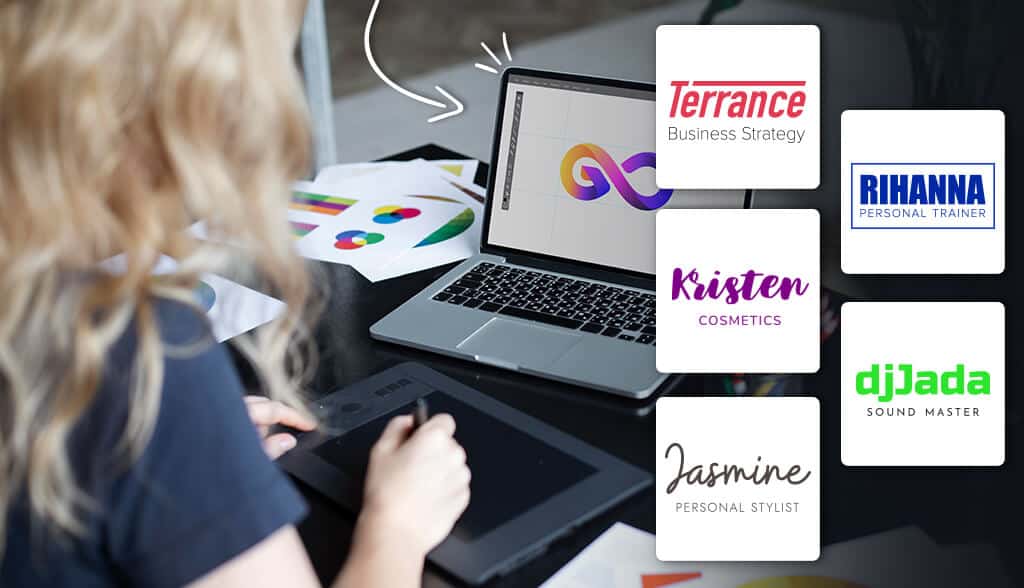
In today's competitive market, small businesses need a strong visual identity to stand out from the crowd. A well-designed logo plays a crucial role in establishing brand identity and conveying the essence of your business.
This article explores the eight essential elements of logo design for small businesses. These elements include cost considerations, brand identity, color and font choices, symbolism, versatility, market differentiation, and the decision to hire a professional designer or go the DIY route.
Discover the key factors to create a visually captivating logo that resonates with your target audience.
Understanding the Importance of a Logo for Small Businesses
The significance of a well-designed logo is paramount for small businesses looking to establish a strong brand identity. A professional logo design is essential as it acts as the face of the business, representing its values, personality, and offerings. It serves as a visual symbol that customers can easily recognize and associate with the brand.
A professionally designed logo not only enhances credibility but also creates a lasting impression on potential customers, helping to build trust and loyalty. Additionally, a unique logo design sets a small business apart from its competitors, making it more memorable and easily distinguishable.
It also plays a crucial role in marketing and advertising efforts, as it can be used across various platforms to create a consistent and cohesive brand image. Ultimately, investing in a professional logo design brings numerous benefits and serves as a foundation for a successful brand identity.
Defining Your Brand Identity Through Logo Design
Effectively defining your brand identity through logo design is crucial for small businesses to establish a strong and recognizable presence in the market. A well-designed logo can communicate the values and personality of your brand, helping to differentiate it from competitors and attract your target audience.
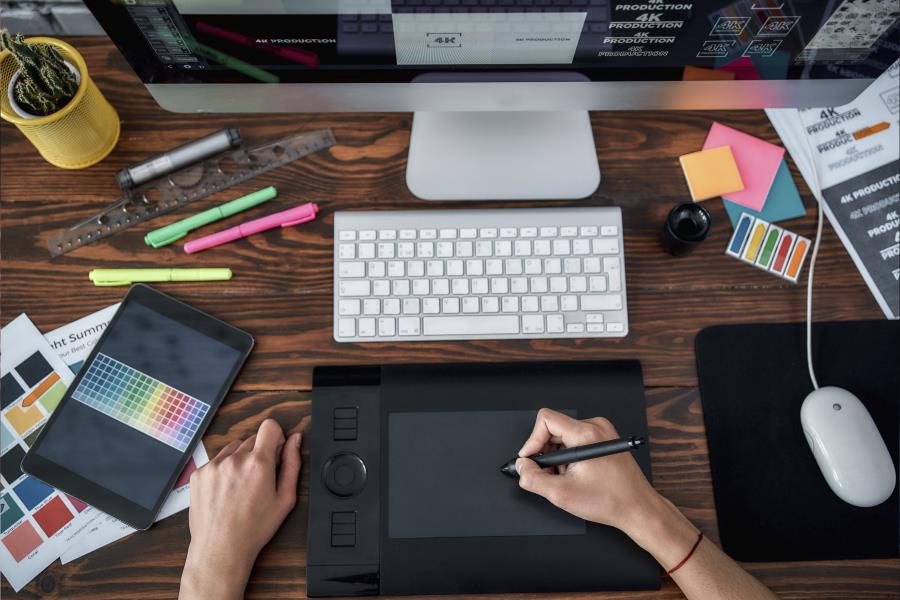
To achieve this, consider the following branding strategies and logo design trends:
- Research and understand your target audience to ensure your logo resonates with them.
- Reflect your brand's unique identity and values through the design elements, such as color, typography, and symbolism.
- Keep it simple and memorable, as minimalist logos tend to leave a lasting impression.
- Stay updated with current logo design trends to ensure your logo remains relevant and fresh.
Setting a Budget for Logo Design: Cost-effective Options for Small Businesses
When it comes to setting a budget for logo design, small businesses have several cost-effective options to consider.
One option is to tackle the design process themselves by using DIY logo design software or online generators.
Another option is to hire a professional designer, although this may come with a higher price tag.
Lastly, there are budget-friendly online platforms that offer pre-designed logo templates that can be customized to suit the business's needs.
Each option has its own advantages and considerations, and it is important for small businesses to carefully evaluate their budget and goals before making a decision.
DIY Logo Design
To ensure cost-effectiveness and flexibility in logo design, small businesses can consider opting for DIY logo design at any stage of their brand development. DIY logo design allows businesses to have complete control over the design process while also saving money on professional design services.

Here are some cost-effective strategies and common design mistakes to keep in mind when embarking on a DIY logo design:
- Research: Take the time to research and gather inspiration from successful logos in your industry.
- Simplicity: Keep your design simple and avoid overcrowding with unnecessary elements.
- Typography: Choose a font that reflects your brand identity and is easily readable.
- Color: Select colors that align with your brand personality and evoke the desired emotions.
Hiring Professional Designers
One cost-effective option for small businesses is to allocate approximately 10-15% of their overall marketing budget towards hiring professional designers for their logo design.
While DIY logo design may seem like a cost-effective alternative, the benefits of professional expertise cannot be overstated. Professional designers possess the skills and knowledge to create a logo that effectively represents a business's identity and resonates with its target audience. They understand the principles of design, color psychology, and branding, ensuring that the logo communicates the desired message and leaves a lasting impression.
Fortunately, there are several budget-friendly online platforms available for small businesses seeking cost-effective options for logo design. These platforms offer affordable design options and provide numerous benefits for businesses looking to create a unique and professional logo.
Here are some of the advantages of using online platforms for logo design:
Wide selection of pre-designed templates: These platforms offer a vast library of pre-designed templates that can be customized to match your business's identity and style.
User-friendly interface: Online platforms are designed to be intuitive and easy to use, making it simple for anyone, regardless of their design skills, to create a logo.
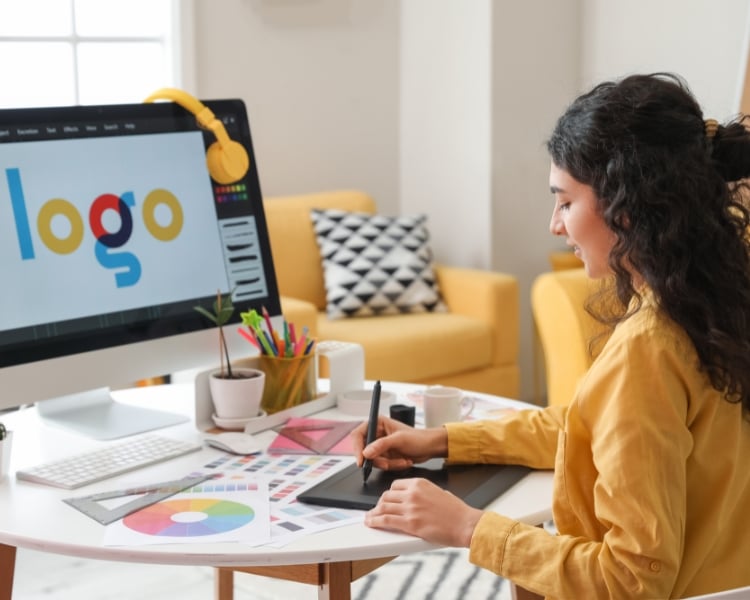
Quick turnaround time: With online platforms, you can create a logo in a matter of minutes or hours, saving time compared to the lengthy process of hiring a professional designer.
Cost-effective: Online platforms offer affordable pricing options, making them a budget-friendly choice for small businesses.
Choosing the Right Colors and Fonts for Your Logo
When it comes to choosing the right colors for your logo, it's important to consider color psychology and how it can impact your brand. Different colors evoke different emotions and can convey different messages to your audience.
Additionally, selecting the right font is crucial for readability and making a visual impact. It's essential to choose a font that aligns with your brand identity and is easy to read across different platforms and sizes.
Lastly, consistency in branding is key to creating a cohesive and recognizable logo that reflects your business's identity and values.
Color Psychology in Logos
The selection of the appropriate colors and fonts for your logo is an essential aspect of utilizing color psychology in logo design for small businesses. Colors have a significant impact on consumer behavior and can evoke specific emotions and associations. When choosing colors for your logo, consider the following:
- Red: Creates a sense of urgency and excitement. It is often associated with passion and energy.
- Blue: Conveys trustworthiness and stability. It is commonly used by financial institutions and healthcare providers.
- Yellow: Represents optimism and happiness. It can grab attention and create a sense of warmth.
- Green: Symbolizes growth and nature. It is often used by brands related to health, sustainability, and the environment.
Fonts also play a crucial role in logo design. They can communicate the personality and style of your brand. Consider using clean and modern fonts for a contemporary look, or playful and whimsical fonts for a more creative and fun vibe.
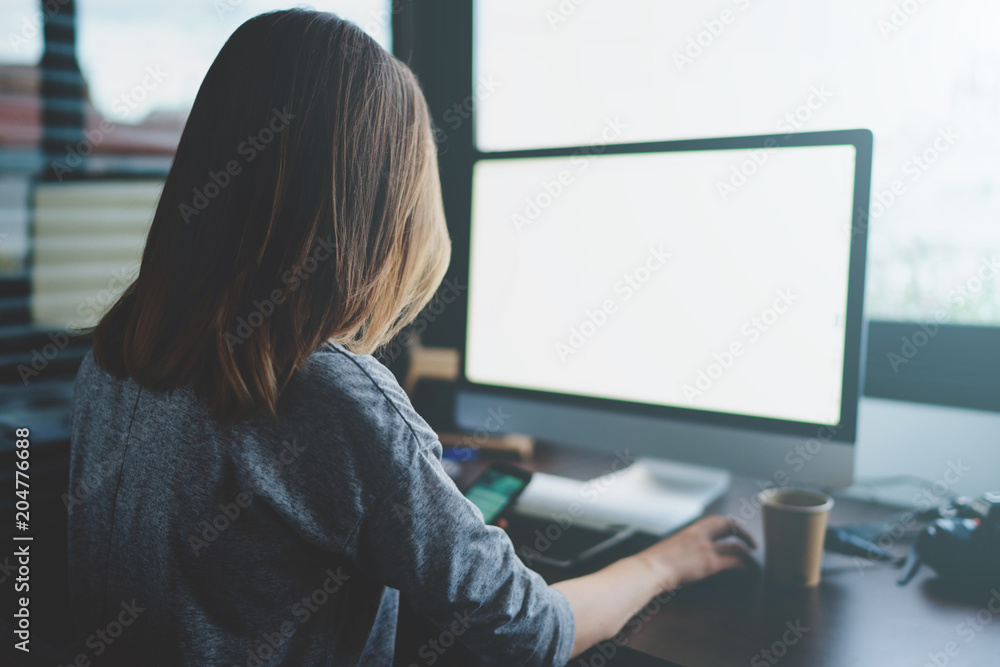
Font Readability and Impact
For optimal logo design, it is essential to prioritize font readability and select the right colors and fonts that will have a significant impact on your brand identity.
When it comes to font selection, it is important to choose a typeface that is legible and easily recognizable. Avoid overly decorative fonts that may hinder readability. Additionally, consider font pairing to create a harmonious balance between different font styles. Combining a bold and attention-grabbing font with a more subtle and refined one can create visual interest and convey the desired message.
The choice of colors is equally important, as they evoke emotions and create associations with your brand. Consider the psychology of colors and choose hues that align with your brand values and target audience.
When done right, font readability and color selection can enhance the impact of your logo and effectively communicate your brand identity.
Consistency in Branding
Consistency in branding is crucial when it comes to choosing the right colors and fonts for your logo. By maintaining brand consistency, you create a cohesive and memorable brand identity that fosters brand recognition.
Here are some key considerations when selecting colors and fonts for your logo:
Colors: Choose colors that align with your brand's personality and values. Consider the emotional response that different colors evoke and select ones that resonate with your target audience.

Fonts: Select fonts that reflect your brand's tone and style. Fonts can convey different messages, such as professionalism, playfulness, or elegance. Ensure that the chosen fonts are easily readable and visually appealing.
Harmonization: Create harmony between your logo colors and fonts to establish a unified visual identity. Consistency in both aspects helps build brand recognition and reinforces your brand's message.
Versatility: Consider how your chosen colors and fonts will translate across different mediums, such as print, digital, or signage. Ensure that they remain consistent and recognizable across all platforms.
Incorporating Symbolism and Meaning in Your Logo Design
When crafting a logo design, it is important to consider the incorporation of symbolism and meaning within the design itself. Symbolic elements and hidden meanings can add depth and intrigue to a logo, capturing the attention and curiosity of your audience.
A well-designed logo should not only be visually appealing, but also convey a message or represent the values of your brand. By using symbolic elements, such as shapes, colors, or icons, you can create associations that resonate with your target audience.
Hidden meanings can be cleverly incorporated into the design, adding an extra layer of depth and creating a sense of discovery for those who interact with your logo. This allows your logo to tell a story and connect with your audience on a deeper level, establishing a strong and memorable brand identity.
A versatile logo is essential for small businesses as it needs to work effectively across different platforms. Designing a responsive logo for different devices, platforms, and screen sizes is crucial to ensure your brand's visibility and recognition.

Here are some tips for creating a memorable and recognizable logo for your brand:
Keep it simple: A clutter-free design will make it easier for your logo to adapt to various sizes and formats.
Consider scalability: Ensure that your logo retains its quality and legibility when scaled up or down.
Test across platforms: Make sure your logo looks great on websites, social media profiles, business cards, and other marketing materials.
Choose adaptable colors and fonts: Opt for colors and fonts that work well across different platforms and backgrounds.
Ensuring Your Logo Stands Out in a Competitive Market
To effectively stand out in a competitive market, small businesses must carefully consider the design elements of their logo. Creative logo design techniques can help businesses create a visual identity that grabs attention and leaves a lasting impression.
One strategy to make your logo memorable is to keep it simple and unique. Avoid using cliché symbols or generic typography that can blend in with competitors. Instead, focus on creating a logo that is visually appealing and represents the essence of your brand.
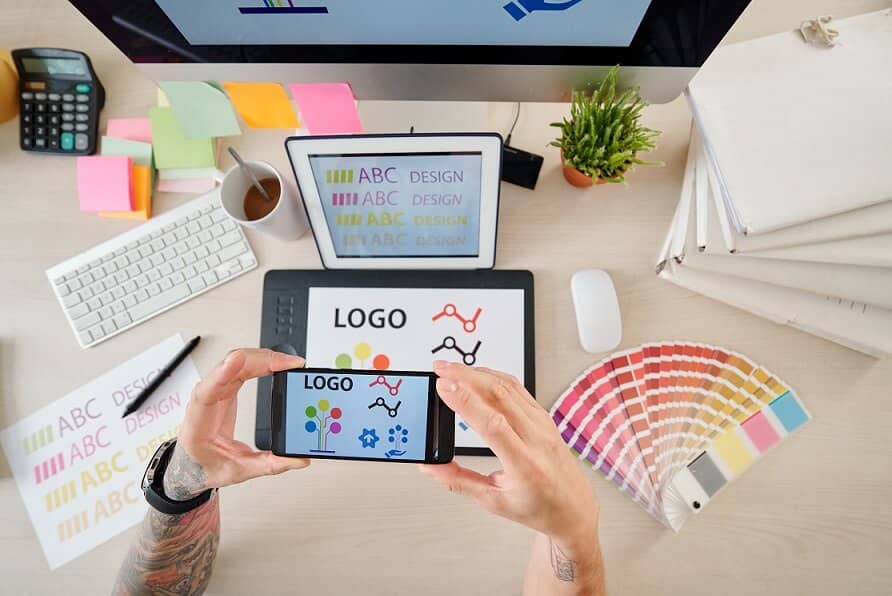
Another strategy is to use color psychology to evoke emotions and create a strong association with your brand. Additionally, incorporating an element of surprise or cleverness in your logo design can make it more memorable and encourage customers to engage with your brand.
Hiring a Professional Logo Designer Vs. DIY: What's Best for Your Small Business?
The decision to hire a professional logo designer or pursue a DIY approach is a crucial consideration for small businesses seeking to establish their visual identity. Both options have their pros and cons, and it's important to weigh them carefully before making a decision.
Here are some factors to consider when choosing between a professional logo designer and a DIY approach:
Pros and cons of DIY logo design:
Pros: Cost-effective, allows for creative freedom, immediate availability of design tools.
Cons: Lack of expertise and experience, limited design options, potential for unprofessional results.
Factors to consider when choosing a logo designer:
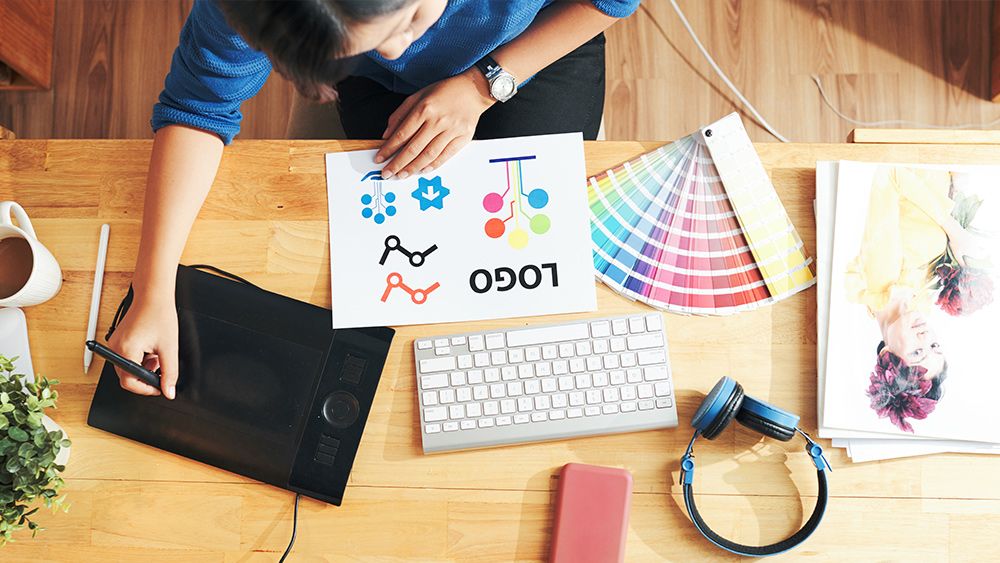
Expertise and experience: Look for a designer with a strong portfolio and positive client feedback.
Budget: Determine what you can afford and find a designer within that range.
Communication: Ensure that the designer understands your vision and can effectively communicate and collaborate with you.
Compatibility: Choose a designer whose style and approach align with your brand's values and aesthetics.
Frequently Asked Questions
How Long Does It Typically Take to Design a Logo for a Small Business?
The average time to design a logo for a small business depends on various factors such as complexity, revisions, and client response time. It can range from a few days to a few weeks.
Can I Trademark My Logo Design to Protect It?
Yes, you can trademark your logo design to protect it. Trademark protection ensures that others cannot use a similar design for their business. It is an effective way to safeguard your logo copyright.
Are There Any Legal Considerations When Using Certain Colors or Symbols in a Logo?
When designing a logo, it is important to consider legal implications and cultural considerations. Certain colors and symbols may have trademark or copyright restrictions, or may be offensive to certain cultural or religious groups.
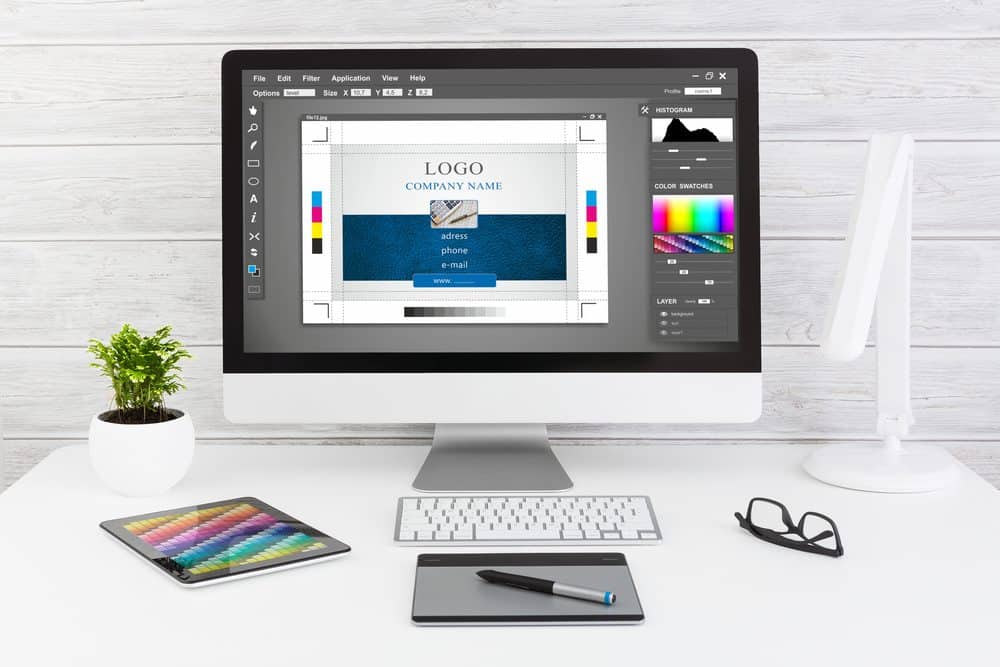
How Can I Ensure My Logo Looks Good on Both Digital and Print Materials?
Designing a logo that looks good on both digital and print materials requires careful consideration of factors such as color selection, font choice, and scalability. It is essential to ensure the logo maintains its visual appeal and legibility across different mediums.
What Are Some Common Mistakes to Avoid When Designing a Logo for a Small Business?
When designing a logo for a small business, it is important to avoid common mistakes that can hinder its effectiveness. Here are some tips for effective logo design that can help you create a visually appealing and memorable logo.
 Digital Art InstructionDIY Infographics DesignMobile Game ArtworkPersonalized Logo Design3D AnimationeBook Covers DesignPrivacy PolicyTerms And Conditions
Digital Art InstructionDIY Infographics DesignMobile Game ArtworkPersonalized Logo Design3D AnimationeBook Covers DesignPrivacy PolicyTerms And Conditions
